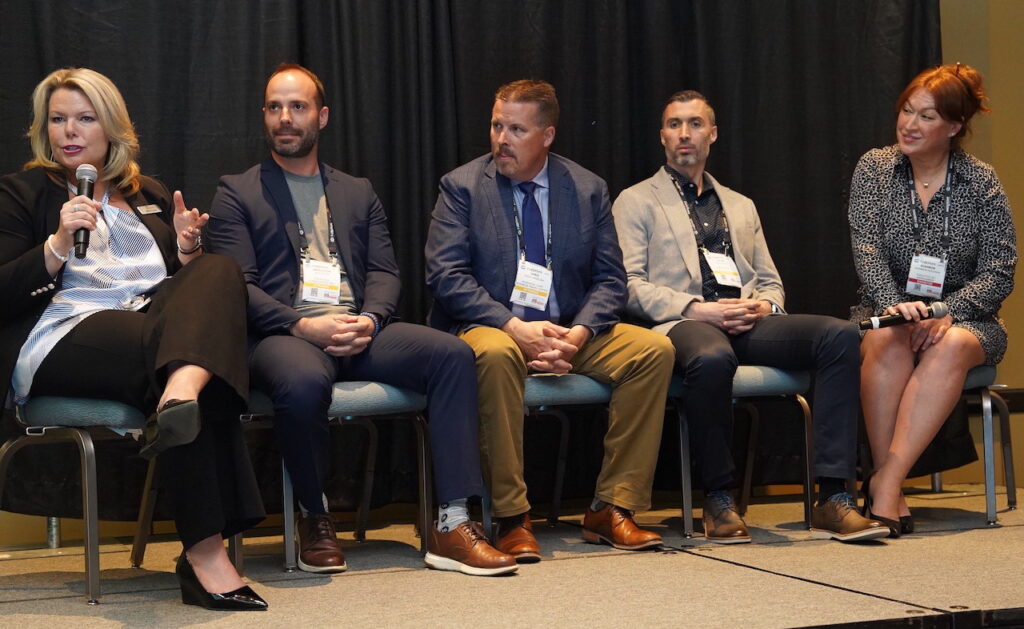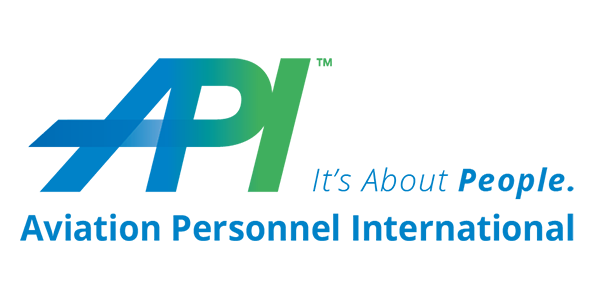
After last year’s aviation maintenance conference, I realized that we hadn’t been talking about diversity. So, I mentioned to a few of my fellow NBAA committee members that it’s an important topic we ought to keep front and center.
You might say I felt some resistance.
“We might have a hard time tackling that topic,” someone told me. Apparently, it was too controversial. So, I explained that if discussing diversity issues seems too scary, then it’s exactly why we need to put it on the agenda.
Fast forward several months later, when I heard from Greg Hamelink who was helping to organize the 2023 NBAA Maintenance Conference. He said, “Jen, you’re right. Let’s do something on diversity. Will you help me?”
Rolling Up Our Sleeves
With Greg’s help, I put together a panel of experts with the tackling the tough topics that we face as hiring managers.
Our aviation maintenance panel included:
- Jim Elston – Senior Director of Aviation, Coca-Cola Consolidated
- Kevin Flynn, CAM – Director of Aviation Maintenance, AbbVie
- Greg Hamelink – Director, Business Travel Center, Whirlpool
- Shannon Hotchkin – Director of Fleet Maintenance – Southeast, Executive Jet Management
As the session moderator, I opened by addressing the elephant in the room: the fact that we currently have some looming challenges.
In particular, I referenced the two-year study published in 2022 by the Women in Aviation Advisory Board. In sixty years, the percent of women in aviation maintenance has reached only 2.6%—marking one of the greatest gender gaps in the entire industry. I shared additional statistics on the maintenance talent crisis, underscoring the fact that we’re in need of more qualified technicians. And that we need to recruit technicians from various underrepresented populations.
The Women in Aviation study also mentioned that biggest barrier to attracting females to our industry is due to our culture. Simply put, women don’t feel like they belong in aviation. And that goes for underrepresented populations, too.
That means we have a lot of work to do. And we should see this as a tremendous opportunity—not a negative. Or an embarrassment.
So, I explained to the audience the genesis of what brought us to this panel. The sense that people are afraid they’ll say or do the wrong thing. And the fear to speak up and engage due to the pervasive “cancel culture.”
And so, we discussed how the panel wanted to model how we can lean into some of these tricky conversations. And that we wanted to be a safe place to get people talking. It began with our attendees, of which there were about 100 in the room.
One of the very timely questions was about a diversity quota. “It makes me super uncomfortable to hire people because of their race and their gender. What do you think of it?” someone asked. We even tackled the age-old question: “Why can’t we just hire the best person for the job?”
And let me tell you, the experience was nothing short of enlightening. As our panel began to answer diversity-related questions, the audience’s engagement was immediate. And positive! Hands went up in the air and there was a frenzy of questions.
After the hour-long session, people gave us positive feedback. They said things like, “Thank you so much!” “It’s about time!” and “We need to talk about these things.”
To me, this was a huge win, and I very much appreciate Greg Hamelink having given us a platform. This is just more evidence that our fellow colleagues are eager to tackle tough topics. So, our next goal is to address these issues on the main stage at future NBAA events!
Hiring for Diversity Q&A
Following are more details regarding several questions we addressed on the panel. I’m thankful to my colleagues, Jim Elston and Kevin Flynn, for sharing their answers.
Q: We have a diversity quota, and I’m uncomfortable hiring on the basis of someone’s gender or skin color. I am not opposed to it, but I do not understand these requirements. Can you please shed some light on how we should interpret/react to them?
A – Jennifer Pickerel: Often, diversity quotas/requirements from HR are not well received. In fact, they’re often resented due to the lack of communication. There’s an opportunity for improved messaging and training in this area.
As you know, we’re in the midst of a maintenance and pilot talent crisis. Which means there is ample opportunity for all populations to enter aviation. Because we need them!
There’s significant research to support the idea that diversity of thought is beneficial. It contributes to greater innovation, productivity and dynamism among staff. So, it’s in an organization’s best interest to assemble a “mosaic” of a team. (As opposed to hiring people with similar backgrounds, schooling, and upbringings, etc.)
Diversity quotas help us reach beyond traditional hiring pools to find qualified talent. This does not mean that we need to sacrifice expertise, technical ability or professionalism. Rather, it’s extending your hand to someone who may be unfamiliar with our industry. Or, similarly, people who do not have the network to “break into” our industry.
Hiring “the best person for the job” can mean hiring someone who is both less represented and, at the same time, the most qualified. These terms are not mutually exclusive.
Lately, many bizav operators have forged relationships with organizations to find diverse talent. Take a look at OBAP, NGPA, Sisters of the Sky, and so on. Doing so helps to expose these talented professionals to the opportunities within business aviation.
As a hiring manager, it’s reasonable to ask for HR’s help in these recruiting efforts. Be sure that they elaborate on the context behind the initiative, and that you request any necessary training. It will ensure that you create a more welcoming team, which in turn creates a healthy outcome for all.
Getting Ready to Be Inclusive
Q: I manage an all-male maintenance team and fear that if/when we hire a female that we may say or do the wrong thing. How do I determine if we are ready? What steps can I take?
A – Jim Elston: My observation is that “readiness” is unique to each organization and department. Even leader. That’s because the business landscape, culture and inter-company dynamics vary.
Our organizational culture is at the forefront, so we strive to live out excellence every day. Our purpose and values are not internal to aviation, but companywide.
Being ready to be inclusive means we need to develop areas of trust and understanding. It means building the relationships between teammates, leadership and the aviation group. These bonds will ultimately help create empathy and understanding of one another.
Diversity of thought is important. That means we should listen to understand—rather than listening to respond. Doing so has been instrumental in shifting to more openminded thinking. Once we establish that trust and understanding, we can create space for imperfection. Sure, we will get it wrong some days. And on those days, we need to be willing to slow down, listen and communicate with respect, care and integrity.
Creating a Healthier, Welcoming Culture
Q: The term “inclusivity” is polarizing for my team. I know that they do not always excel at welcoming newcomers/others, and are somewhat “clique-y.” What methods do you use to bring your teams together and create a healthier culture?
A: Jim Elston: First, we have a saying that we provide safety, service and efficiency, second to none. Sure, it’s a touch cliché, but it helps keep us focused on others first.
Having a “servant leadership” mindset is about growth and service. Our motto is to help those around you find success so that success will find you. Within our team, the same principles apply. Care about others. Have understanding and empathy. Be willing to listen. The leadership skills will go a long way in creating a culture that is more welcoming.
Tackling Ageism
Q: Our youngest maintenance technician is ready for a promotion to supervisor. But our more senior techs (who do not have the same skill set), will likely be sensitive to this leadership change. What are your thoughts on this?
A – Kevin Flynn: The most critical step for the manager is to be open and transparent in his/her communication. Before making an official announcement, pull the senior technicians aside. Explain to them the attributes/skills you are looking for. Then tell them why you think a certain individual is best for the role, and why you’re promoting him/her.
Should a senior technician show interest in the role, that’s a coaching opportunity. In that case, the manager should help identify their areas for growth. Then outline a course of action to get him/her the required skills for future opportunities.
Recruiting the Next Generation in Aviation Maintenance
Q: We have retirements coming up, so I want to consider hiring people from other generations. This will help me create a more strategic succession plan. But some of our tenured staff give younger hires a hard time. The fact is, we need to modernize, and the new talent has lots of great ideas. But they’re often disregarded. Because “that’s not the way we do it” and “the younger generation has no experience.” How would you address this?
A – Kevin Flynn: A maintenance team should always take advantage of fresh ideas. Be open to recommendations from any new employee, regardless of age.
I’ve found it helpful to drop my ego and ask for feedback, especially during a new hire’s first 90 days. I ask them to make recommendations for the operation. Sure, it can be uncomfortable. But pushing through the discomfort can lead to a fresh perspective and a new way of doing things. The result has brought about some of our most impactful operational changes.
If the manager is open to new ideas and change, the more tenured staff will lower their guard. Regardless of where the idea originated.
Don’t be Afraid to Jump In!
For me, the takeaway from having helped to organize this important panel discussion couldn’t be more profound. Tackling diversity is at the forefront for nearly every industry, and it should be in ours, too. No longer can we have an “ignore or avoid it at any cost” mentality. There’s so much to gain from bringing it out in the open. And just talking about it.
I hope some of the questions we addressed in the panel will give you some insights into this all-important issue. If nothing else, maybe it will inspire you to address diversity-related topics in and around your organization. The main point to keep in mind is that if it’s difficult or controversial, then it bears talking about. So don’t hesitate—jump in and do it with care.
